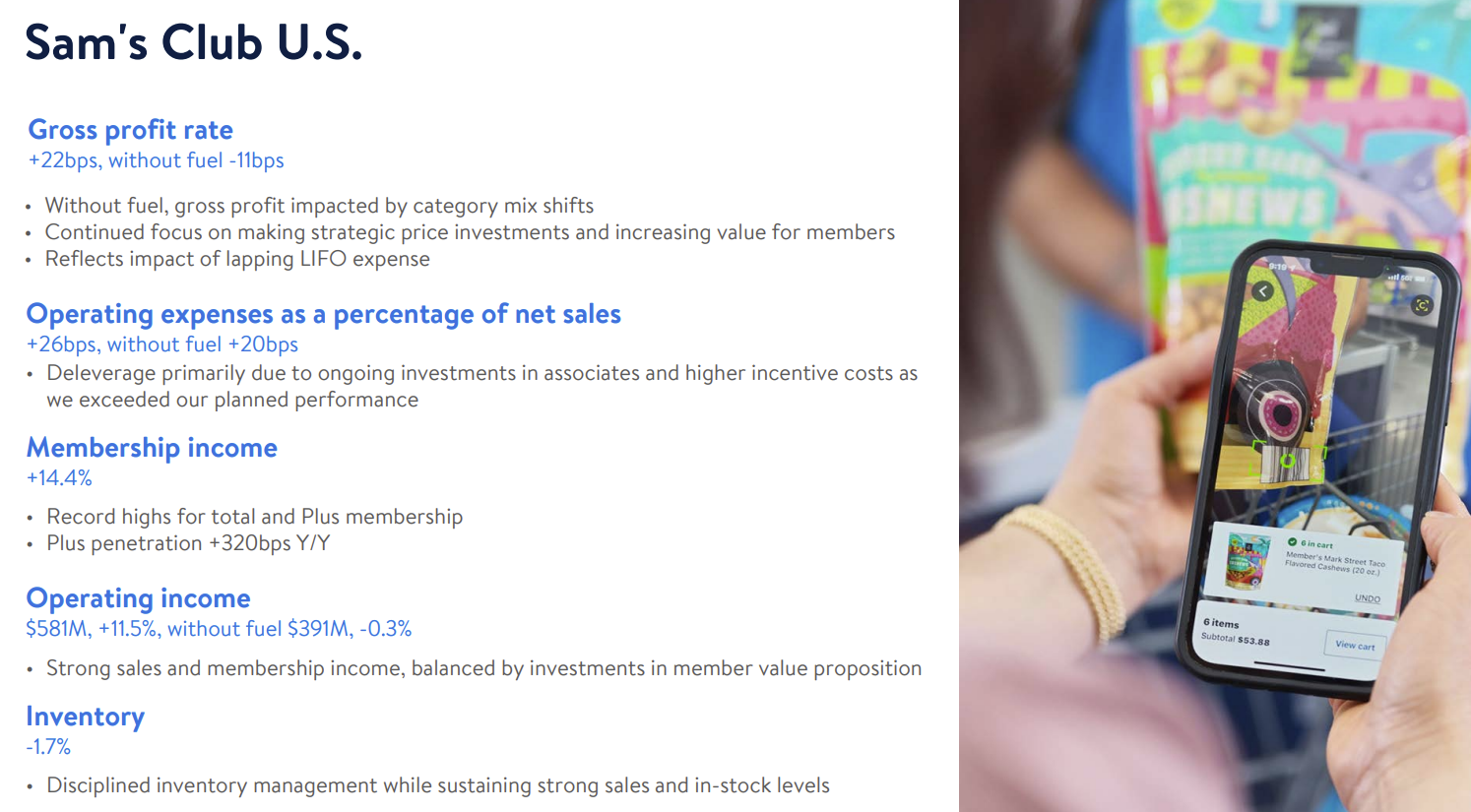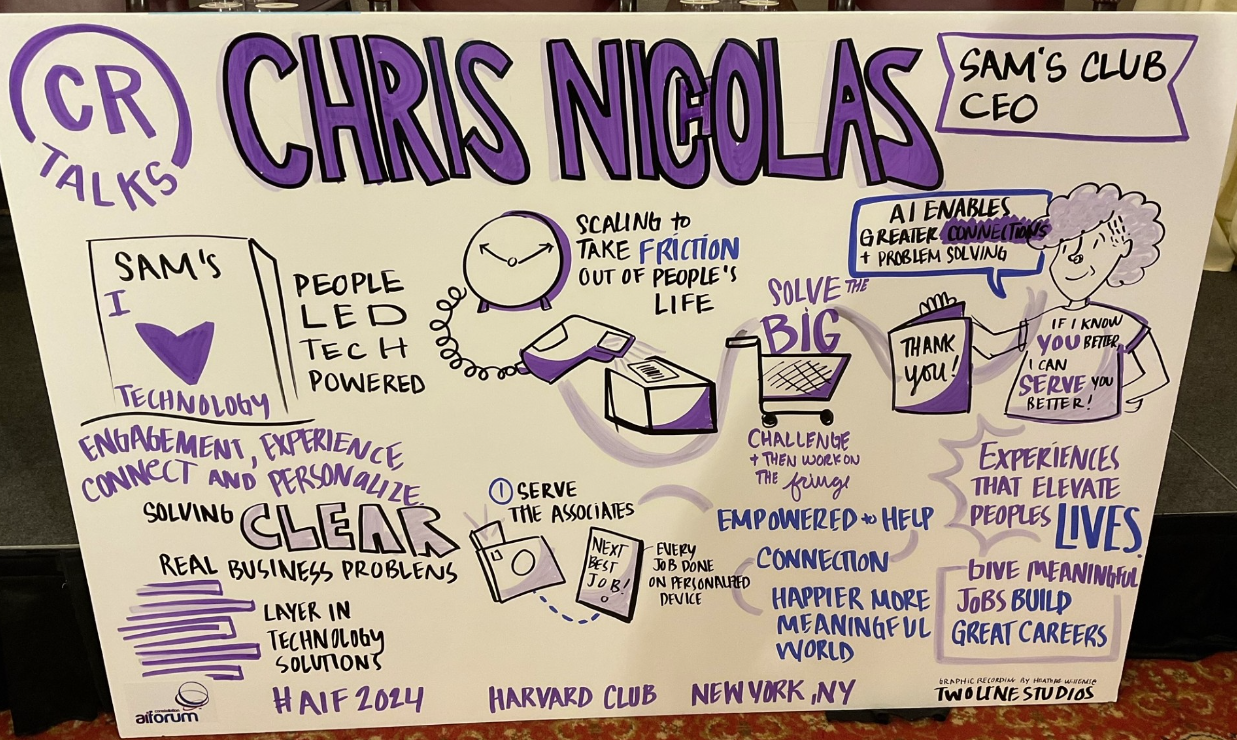Chris Nicholas, President and CEO Sam's Club, said artificial intelligence is enabling the company to "take 100 million tasks out of our clubs" even though it has more associates.
The game plan for Sam's Club, a unit of Walmart, is to leverage technology to enable employees to solve customer problems and drive engagement, said Nicholas, speaking at the Constellation Research AI Forum in New York.
Nicholas said:
"We will take 100 million tasks out of our clubs, and we will have more associates. Why? What are they doing? They are solving members problems. They are driving engagement. They are building our E commerce business. They are connecting on services that we're offering. What it does is it opens up the aperture of people, and efficiency needs to be some kind of like negative connection."
- Walmart CEO McMillon highlights adaptive retail, applied AI at CES 2024
- Walmart's genAI, automation, omnichannel initiatives pay off in Q2
Nicholas said technology needs to help people build careers, build careers and solve problems and then find the next round of opportunities. He added:
"Going forward, the superpower of a business to win from a business perspective is going to be in the connections with people. It just is. I know you can have great nuance with the tone of a generative AI system, and that will solve the problems I don't want my associates to solve. Then they can spend time solving the more deeply connected, more empathic solutions."

Other takeaways from Nicholas:
AI and technology implementations need to start with design thinking, the problems that need to be solved and the customer journey. Nicholas said personalization, Sam's Club member value and experiences are solved "only by technology and the application of data assimilated through artificial intelligence," said Nicholas.
More than a third of Sam's Club shopping visits are using Scan and Go technology for frictionless checkouts. "The adoption curve is rapid and once people have done it, they never go back,” said Nicholas.
Computer vision boosting inventory. Nicholas said:
"We were literally asking people to walk around the club, look for pallets and write on a clipboard if they could see a palette or not. This still happens in most places. Nobody was doing inventory. Terrible, terrible idea, and they're doing it every day. What we did was we had these floor scrubbers, and we said, 'how about put cameras on the floor scrubbers?' We take 23 million images a day of where every palette is, everywhere, multiple times a day, so that we know what's in stock, what's not in stock, where the palettes are, what needs to come down, when and how. By doing that, you just enabled the associate with the app to say, what's the next best task? What we realized through that is that the quality of computer vision imagery getting was so high that we've put it to other applications."
Focus on the work and people, not the technology. Nicholas said enterprises can be carried away with technology, data, AI and new applications, but "the real value is in the actual work that people are doing." "If you take friction away from their lives and empower them you don't need market adoption," said Nicholas. "You just need to make it easy and adoption will happen."



